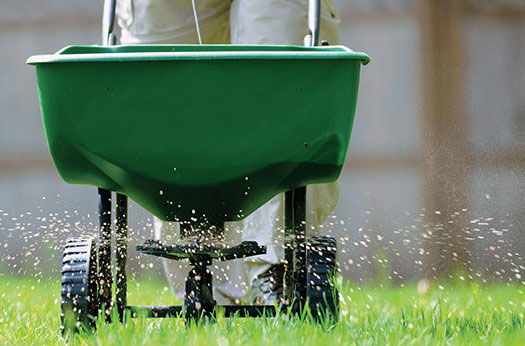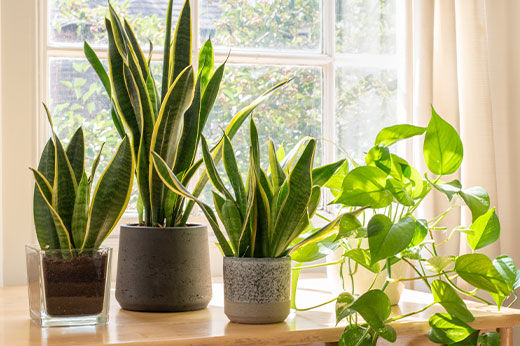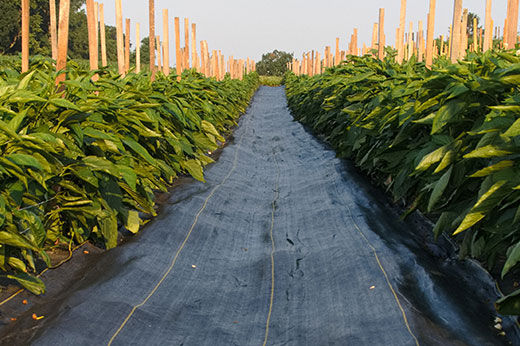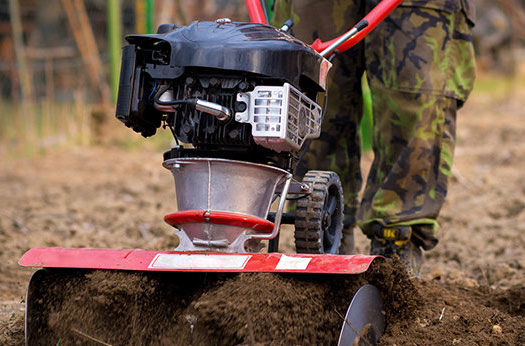How to Aerate Your Lawn
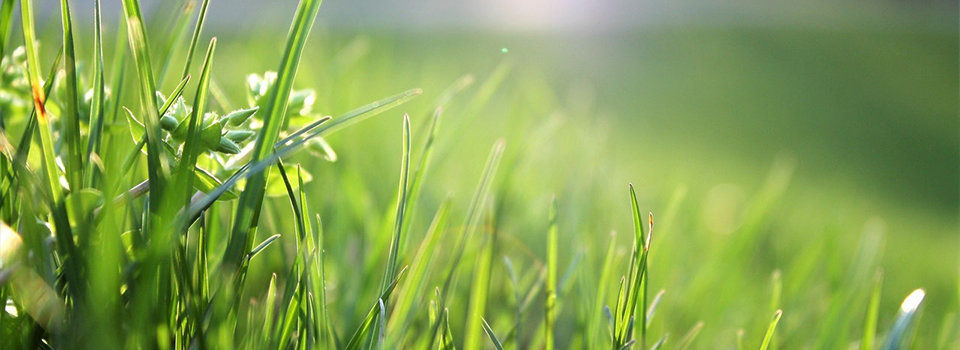
With spring just around the corner – or already in swing, if you’re one of the lucky ones experiencing warmer temperatures – it’s time to get your lawn in shape for the prime spring growing season. You may have diligently followed your lawn fertilization and feeding schedule the past year, but what if your lawn isn’t springing back to life? It may be because nutrients, air, and water are having trouble reaching the roots. Your solution? Aerating or dethatching your lawn. Both of these lawn maintenance routines can help those critical nutrients reach your lawn’s roots and bring back the lush, green lawn you’ve worked hard for.
What is Lawn Aeration?
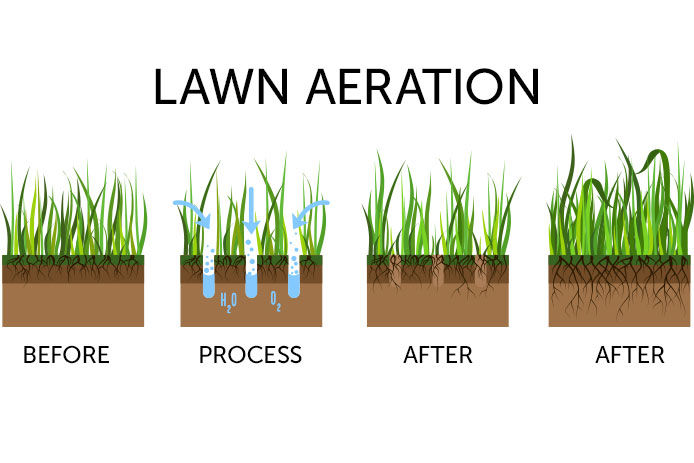
Aerating your lawn is the process of removing plugs of soil from your lawn in order to help loosen up soil that has become too compacted to allow nutrients to reach the roots. If the soil in your lawn has become too compacted, the water, air, and nutrients it needs can get blocked at the surface. You can remove these plugs in a number of different ways, including manually with a hand aerator (recommended only for small lawns), with a rental lawn aerator, or by calling a lawn service pro.
When Should I Aerate My Lawn?

It's best to aerate your lawn in the peak growing seasons - either in early-spring or early-fall for cool season grasses, or late-spring for warm season grasses. You should only need to aerate once a year if your lawn receives heavy traffic; healthy lawns typically only need it every other year.
How to Aerate Your Lawn
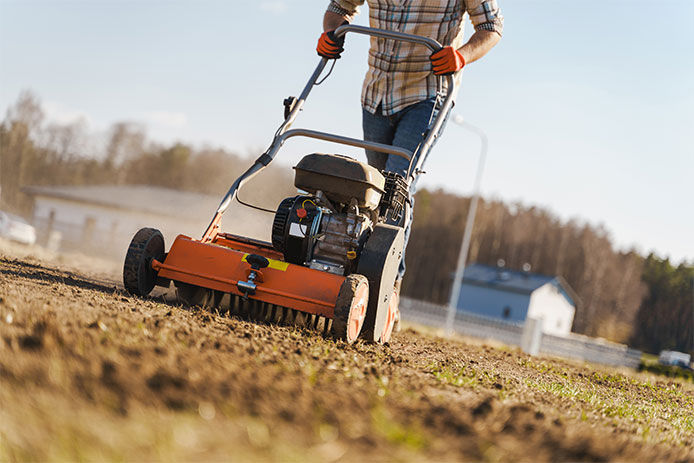
To get the best results from your aeration process, we recommend renting a lawn aerator from your local Do it Best store and following these steps:
- Water your lawn: soften the soil a day before you plan to aerate, or do it a day after a solid rain
- Examine your lawn: make sure you have marked sprinkler heads or any shallow utility lines (always call 8-1-1 before you dig into your lawn in any way)
- Go over your lawn with the aerator: your local store should make sure you know how to properly operate your aerator, so you'll want to understand how to operate the equipment before you take it out. If you've never aerated before, make two passes, with the second being perpendicular to the first.
- Leave the plugs on the soil: the aerator will leave behind small pellets of soil - these will break down and add much-needed nutrients to the soil.
- Water and feed: water your lawn again when finished, add in your preferred lawn food with a quality spreader, and continue watering over the next couple days
What is Dethatching?

Much like compacted soil, having too much thatch in your lawn can prevent nutrients from reaching the lawn's roots. Thatch is a layer of grass, stems, and roots that lays above the soil surface but below the grass itself. The right amount of thatch helps keep moisture in your soil and insulates it against temperature swings; however, too much thatch can block water, air, and nutrients from strengthening your lawn. Dethatching is the process of removing this excess thatch and freeing up the roots to receive the intended nutrients.
When Should I Dethatch My Lawn?
Dethatching should take place the same time as aerating: either early-spring or early-fall, or late-spring through early-summer. These are the peak growing seasons and also when the soil is moist.
How to Dethatch Your Lawn
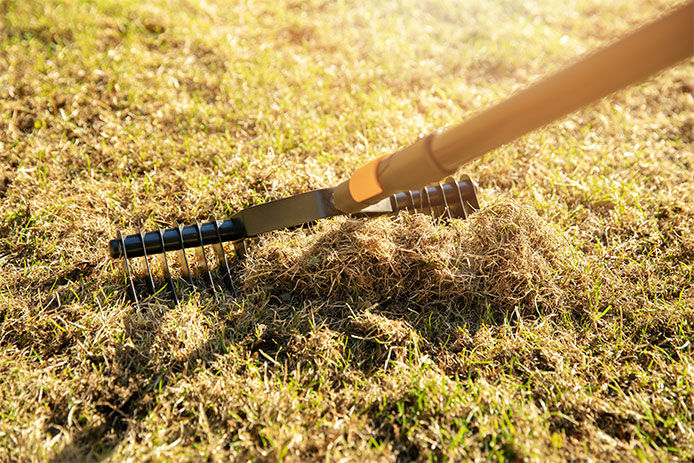
You can dethatch your lawn using either a specialized rake, known as a dethatching rake, using a tow-behind dethatcher, or by renting a dethatcher or power rake. Smaller lawns should be manageable with a manual rake, but you'll want to use power equipment for larger areas. The dethatching process typically looks like this:
- Mow your lawn: before dethatching, mow your lawn to about half its normal height
- Use a dethatching rake (for smaller lawns): the tines of a dethatching rake dig into the layer of thatch and pull it upward, separating it from the soil and loosening the layer
OR
Use a rental dethatcher: examine your lawn first by marking sprinkler heads or any shallow utility lines (always call 8-1-1 before you dig into your lawn in any way). Once your lawn is safely marked, make sure the dethatcher blades are set to cut no deeper than 1/2" into the soil. Then, run the dethatcher across your lawn - Rake your lawn: after dethatching, your lawn will have a lot of loose material on top. Rake this excess up and remove it
- Fertilize and patch your lawn: dethatching may turn up bare spots, which can be filled in with grass seed
- Water your lawn: regular watering will help your grass recover quicker
Aerating and dethatching can mean the difference between a healthy lawn and a struggling lawn this spring. Talk to the experts at your local, independently owned Do it Best store for more lawn care tips and the products you need!
